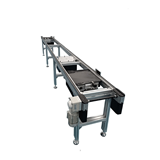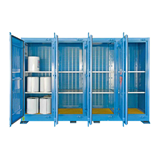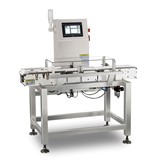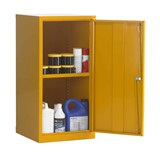Key takeaways
- Identify critical bottlenecks early: Map your supply chain end-to-end to spot weak points in procurement, production, and delivery.
- Invest in technology: Use logistics software, real-time tracking, and predictive analytics to improve visibility and reduce delays.
- Diversify suppliers and transport options: Avoid dependency on a single supplier or transport mode to minimise disruption risks.
- Streamline warehouse and inventory management: Implement automated systems, cross-docking, and just-in-time inventory strategies.
- Plan for seasonal and market fluctuations: Anticipate demand peaks, transport delays, and customs bottlenecks to maintain service reliability.
Introduction: The Australian logistics challenge in 2025
In 2025, Australian businesses face a complex logistics landscape. Rising international freight costs, driver shortages, port congestion, and supply chain disruptions have intensified pressure on companies to deliver efficiently.
A report by the Australian Logistics Council indicates that over 40% of Australian manufacturers and distributors experience delays due to supply chain bottlenecks, impacting both revenue and customer satisfaction.
Avoiding bottlenecks is no longer optional, it’s essential for maintaining operational efficiency, competitiveness, and profitability. This article provides actionable strategies to identify, prevent, and manage logistics bottlenecks within the Australian industrial and commercial context.
1. Map and analyse your supply chain
Understanding your logistics chain from end to end is the foundation of bottleneck prevention:
- Visual mapping: Diagram procurement, production, warehousing, and distribution nodes.
- Identify choke points: Pinpoint stages with limited capacity or recurring delays.
- Data analysis: Track lead times, shipment durations, and supplier performance metrics.
Real-world example: A Melbourne-based electronics distributor used supply chain mapping to identify that a key overseas component supplier consistently caused a 10–14 day delay. Introducing a secondary supplier reduced overall lead time by 25%.
2. Leverage technology and automation
Technology can provide real-time insights and predictive capabilities:
- Logistics management software: Track shipments, manage inventory, and optimise delivery routes.
- Predictive analytics: Use AI to forecast delays based on historical data and market trends.
- Automated warehousing: Robotic picking and automated sorting reduce internal bottlenecks.
Australian scenario: A Brisbane food distributor implemented warehouse automation and predictive delivery software, cutting order fulfillment time by 18% while reducing stock-outs during peak seasons.
3. Diversify suppliers and transport modes
Reliance on a single supplier or transport channel increases vulnerability:
- Multi-sourcing strategy: Engage alternative suppliers to reduce the risk of delays.
- Transport options: Use road, rail, and air strategically, depending on urgency and cost.
- Contingency planning: Prepare backup plans for natural disasters, strikes, or port congestion.
Practical example: An Adelaide mining equipment supplier faced delays when rail services were disrupted. Switching partially to road freight and a secondary supplier allowed them to maintain delivery schedules.
4. Optimise warehouse operations
Internal logistics often create hidden bottlenecks:
- Cross-docking: Transfer incoming goods directly to outbound transport, reducing storage delays.
- Slotting and inventory layout: Organise warehouses by product turnover and delivery urgency.
- Just-in-time inventory: Minimise storage delays and improve cash flow by aligning stock levels with demand.
Case study: A Sydney-based chemicals distributor reorganised warehouse flow and implemented cross-docking. This improved order throughput by 22% and cut processing errors.
5. Improve communication and collaboration
Poor communication amplifies bottlenecks across the supply chain:
- Supplier collaboration: Share forecasts and inventory levels to anticipate demand.
- Transport coordination: Align dispatch schedules with transport providers for timely pickups.
- Internal reporting: Ensure warehouse and production teams communicate in real time.
Australian business example: A Perth furniture manufacturer integrated supplier portals and transport dashboards. Improved visibility cut average shipment delays from 7 days to 3 days.
6. Monitor and adapt to market and seasonal fluctuations
Australia’s logistics landscape is affected by seasonal peaks, customs processing, and global market dynamics:
- Peak demand planning: Anticipate periods like Christmas, EOFY, or major construction cycles.
- Customs and import/export delays: Track regulations, tariffs, and documentation to avoid border bottlenecks.
- Agile response: Regularly review logistics KPIs and adjust operations proactively.
Scenario: A Queensland agribusiness adjusted shipping schedules ahead of seasonal harvest peaks, avoiding refrigerated storage bottlenecks and reducing spoilage by 15%
7. Track key performance metrics
Regular measurement ensures early detection and mitigation of bottlenecks:
- Lead time and cycle time: Track procurement to delivery duration.
- Inventory turnover: Identify slow-moving stock that ties up warehouse capacity.
- On-time delivery rate: Monitor performance against client expectations.
Example: A Melbourne industrial tools distributor created a dashboard monitoring all KPIs in real time, enabling proactive intervention and improving on-time delivery from 85% to 95%.
8. Risk management and continuous improvement
Bottleneck prevention requires ongoing vigilance:
- Scenario planning: Simulate potential disruptions and identify mitigation strategies.
- Continuous improvement: Review processes quarterly to find inefficiencies.
- Training staff: Ensure teams understand workflows and can adapt to unexpected challenges.
Australian context: A national logistics firm implemented monthly supply chain audits and staff cross-training, resulting in a 12% increase in overall supply chain efficiency.
Conclusion
Avoiding bottlenecks in your logistics chain requires a proactive, technology-enabled, and data-driven approach. By mapping your supply chain, leveraging automation, diversifying suppliers, and continuously monitoring KPIs, Australian industrial businesses can reduce delays, improve customer satisfaction, and strengthen operational resilience.
Bottlenecks are inevitable, but with the right systems, planning, and flexibility, you can mitigate their impact and maintain competitive advantage in 2025 and beyond.







-160x160-state_article-rel-cat.png)



-160x160-state_article-rel-cat.jpg)












